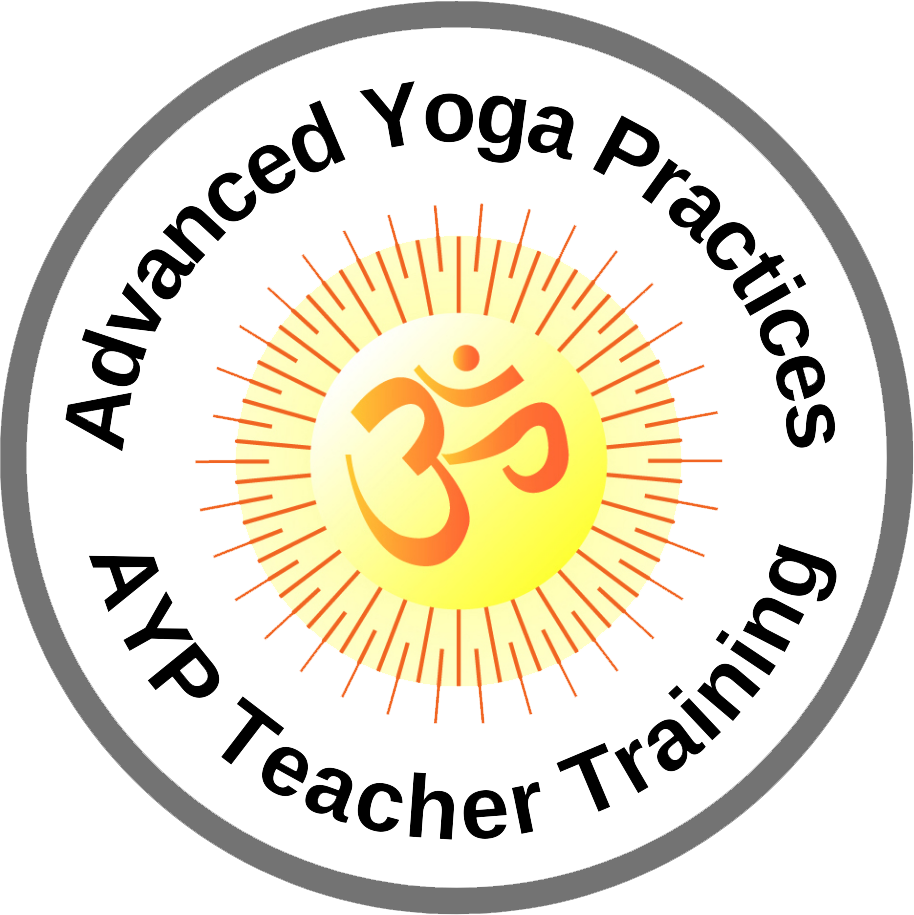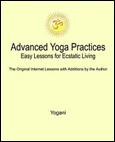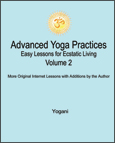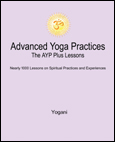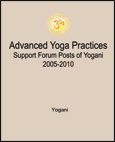|
Public Home | Plus Home | Main Lessons | Tantra Lessons | Public Forum | Plus Forum | Downloads | Books Topic Paths | Search | Training-Retreats | Testimonials | Survey | Interviews | MultiMedia | Contact | Donate |
|
Advanced Yoga Practices Note: For the Original Internet Lessons with additions, see the AYP Easy Lessons Books. For the Expanded and Interactive Internet Lessons, AYP Online Books, Audiobooks and more, see AYP Plus. Lesson 144 - Chin Pump Lite (Without Kumbhaka) (Audio)
From: Yogani New Visitors: It is recommended you read from the beginning of the archive, as previous lessons are prerequisite to this one. The first lesson is, "Why This Discussion?"
A: Yes, with the chin pump you can. If kumbhaka is difficult for you, even in the easy way it was instructed to be done, then don't do it. This question has come a few times from different angles recently, and it is time to address it. Sometimes kumbhaka is not only uncomfortable, but can stimulate excessive kundalini. In either case, the instruction is to back off and return to a comfortable platform of practices that we can be stable with until we are ready to step back up. If we are comfortable in spinal breathing, and bandhas, mudras and siddhasana we use during spinal breathing, we can do the chin pump easily in the last few minutes of our spinal breathing session. If we are doing spinal breathing for, say, ten minutes, then for the last three to five minutes we can do the chin pump along with our spinal breathing. It is the same procedure as when we are using kumbhaka, only we do not stop to hold our breath. The head rotation changes at the same point in the breathing cycle as when using kumbhaka, at the top of the breath after we have inhaled. You could call this approach without kumbhaka "chin pump lite." This is a good time to mention that spinal breathing, and all pranayama methods, are forms of kumbhaka in the sense that "restraint of breath" (what pranayama means) places a slight challenge on the oxygen supply in the body. This is what draws prana up into the nervous system from its huge storehouse in the pelvic region. So whether we are doing spinal breathing or kumbhaka, we are doing restraint of breath. It is only a matter of degree. The more restraint, the more kundalini flows up. That is why it is okay to do the chin pump with spinal breathing. There will be good effects, just not as much prana moving as when using kumbhaka. That is okay. We move what we can move without causing excessive flows. Whatever level we operate at, we will always be purifying our nervous system to more. That is the whole game - maintaining forward progress without falling off into messy energy flows that will force us to stop our practices. Of course, the daily practice of global deep meditation is very important in this purification process. With the silence of pure bliss consciousness, it is purifying gently underneath everything going on in the nervous system, and this helps all other practices work much smoother and faster. In future lessons we will be exploring another form of pranayama called bastrika. With that one we will be saturating the body with oxygen in one way and challenging the oxygen supply in the body it in another way, both at the same time, with powerful purifying effects. As always we use self-pacing in our practices, including in spinal breathing and kumbhaka. If we find the chin pump (or chin pump lite) producing excessive kundalini energy flows, we back off to a comfortable level of practice. As for yoni mudra, this is a different story. Kumbhaka is central to yoni mudra, because we are using gentle air pressure coming up from the lungs to cleanse the sinuses and stimulate the third eye. So, without kumbhaka, yoni mudra is reduced to the fingers pushing the eyes toward the point between the eyebrows. That is ok, but it is probably better to just let go of yoni mudra if we are not comfortable doing kumbhaka, and stick with a good spinal breathing session with chin pump near the end, if it is comfortable to do. If we are doing good sambhavi during spinal breathing, then this is as good as doing the finger thing with the eyes. So, if kumbhaka doesn't want to be there, just forget yoni mudra and do the other practices, as discussed. There is a small time advantage in doing chin pump lite. That is the overlapping of spinal breathing and chin pump in time. For busy people this might have some attraction. If you can do pranayama (with chin pump lite) and meditation in 30 minutes, instead of 35 or 40 minutes with kumbhaka, it can help preserve our practice that day when the schedule is full. Trimming practices is not the first recommendation here, but as has been discussed in earlier lessons, brief practice is better than no practice. So, when time is short, we find ways to prioritize and optimize our practice. It so happens that chin pump lite done during spinal breathing is in that direction. Obviously, as we progress and become steady in our practices, whatever level that may be at, we look for our next opening to move up. Purification and growth of the inner divine presence are always happening at every level of practice. In time, as your nervous system purifies as old karmas are dissolved from within, you will have less difficulty with holding your breath. In fact, you will find that the breath tends to suspend on its own more and more during easy practice of pranayama and meditation, with no intention or strain at all. It is as though we are nourished at times entirely by the prana flowing up through us from within. Then kumbhaka is no big deal. It just happens, sometimes for surprisingly long periods. At that stage it is no longer restraint of breath. It is natural suspension of breath. Then we can breathe air from outside, or breathe prana from inside. Either way is okay. No fuss, no strain. The divine light rises and flows in us, and we surrender into the loving arms of God. The guru is in you.
Discuss this Lesson in the AYP Plus Support Forum Note: For detailed instructions on chin pump, see the AYP Asanas, Mudras and Bandhas book, and AYP Plus.
|
|
|
|
Join the Mail List:
AYP Retreats
eBooks - PDF, EPUB
FREE eBooks with
SAVE with Bundled
|







